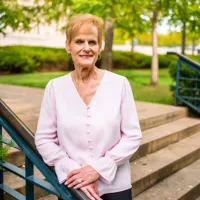
Who Are Your Church’s Neighbors and How Well Do You Really Know and Love Them?
When we think about our neighbors, one generally refers to the people who take up residence next to their own personal residence. We don’t as often consider those residing around our church as our neighbors (unless you also reside in the neighborhood surrounding the church facility, which is growing less and less likely). We drive from our homes in one neighborhood to the church building in another neighborhood (or town) to see our friends who also attend the same church. Even the neighbors we live beside are often merely acquaintances who we occasionally wave at as we drive or walk by one another’s homes.
With the sense of loneliness and depression at all time highs, people have a deep yearning for a sense of community and belonging. Yet, according to the Belonging Barometer – The State of Belonging in America, an alarming 74% of people report a sense of non-belonging in their local community. Being a part of a community provides many benefits including support, connection, new and deepening relationships, sense of belonging, increased knowledge, encouragement, and influence.
Who are the neighbors God is calling your church to connect with and provide community and a sense of belonging? What area of your city, town, or county (depending on population density) is your church taking responsibility for reaching people to share Jesus? How is your church investing in the community so that because of your church people’s lives are better? What individuals in your community are your church investing in with such generous love and authentic relationships that lives are being transformed? How are the congregants in your church seeing, investing, and serving with your community that they are being deeply formed and growing ever more Christ-like?
Long gone are the days of opening the church doors and expecting the neighbors to show up on Sunday morning. As we shared in Inside Out: Everting Ministry Methods in the Postmodern Church, it’s time to reclaim our roots and become a pioneering community who is sent to serve, share, and love. People are starved for community and a sense of belonging. A loving, outwardly-focused congregation can be the very means for those neighborly needs to be met! However, this “community” will need to look and feel very different from what it did a decade ago or even just a couple of years ago. The church must offer the type of community people are seeking and let go of the expectations of the neighbors conforming to the models of community the church has offered without change for the past decade or two. Just as Jesus met people right where they were, as Jesus’ disciples, we are called to do the same.
If your congregation is ready to venture out to meet and love your neighbors, but feel like you need some tools to get you started, check out the webinar, Who Is Your Neighbor. This on-demand webinar will equip leaders with the steps to determine not only who the neighbors are, but how to start conversations, begin building relationships, and create ministries to reach your neighbors. When your leaders are ready for the next step, check out this additional webinar, Connecting with Your Community Through Bridge Events. The church is in the relationships business! It starts with your neighbors!


